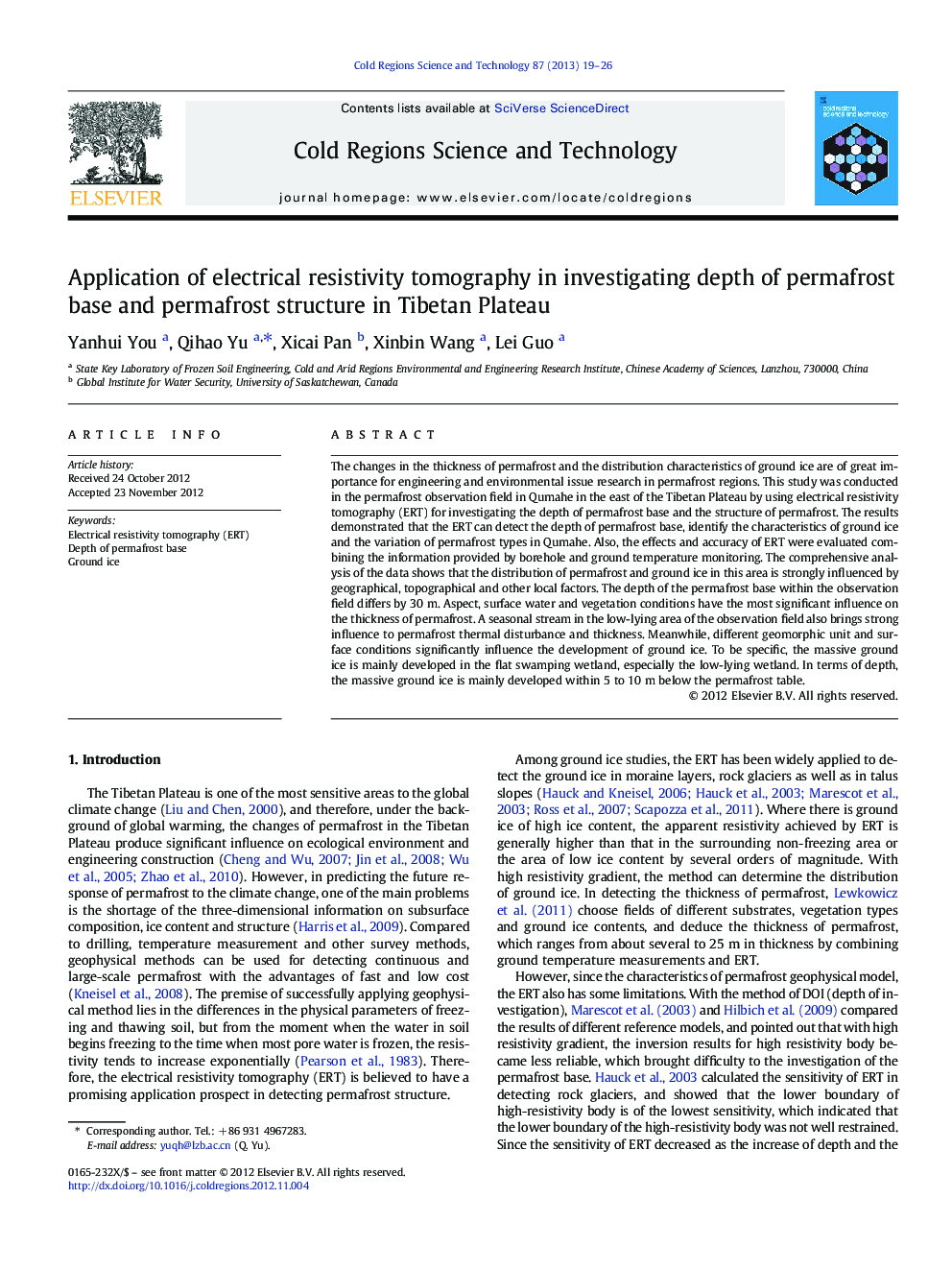| کد مقاله | کد نشریه | سال انتشار | مقاله انگلیسی | نسخه تمام متن |
|---|---|---|---|---|
| 4675926 | 1634474 | 2013 | 8 صفحه PDF | دانلود رایگان |
The changes in the thickness of permafrost and the distribution characteristics of ground ice are of great importance for engineering and environmental issue research in permafrost regions. This study was conducted in the permafrost observation field in Qumahe in the east of the Tibetan Plateau by using electrical resistivity tomography (ERT) for investigating the depth of permafrost base and the structure of permafrost. The results demonstrated that the ERT can detect the depth of permafrost base, identify the characteristics of ground ice and the variation of permafrost types in Qumahe. Also, the effects and accuracy of ERT were evaluated combining the information provided by borehole and ground temperature monitoring. The comprehensive analysis of the data shows that the distribution of permafrost and ground ice in this area is strongly influenced by geographical, topographical and other local factors. The depth of the permafrost base within the observation field differs by 30 m. Aspect, surface water and vegetation conditions have the most significant influence on the thickness of permafrost. A seasonal stream in the low-lying area of the observation field also brings strong influence to permafrost thermal disturbance and thickness. Meanwhile, different geomorphic unit and surface conditions significantly influence the development of ground ice. To be specific, the massive ground ice is mainly developed in the flat swamping wetland, especially the low-lying wetland. In terms of depth, the massive ground ice is mainly developed within 5 to 10 m below the permafrost table.
► The electrical resistivity tomography was used to investigate the depth of permafrost bottom.
► The ground ice and the type of frozen soil were distinguished in the process.
► The accuracy of the method was evaluated with geology and ground temperature information.
► The permafrost characteristics were revealed in the survey area.
Journal: Cold Regions Science and Technology - Volume 87, March 2013, Pages 19–26
